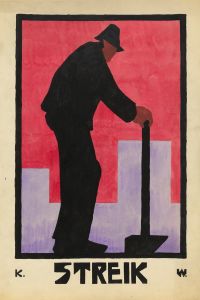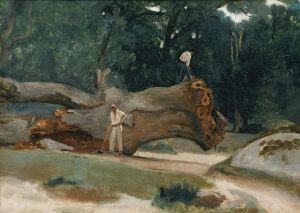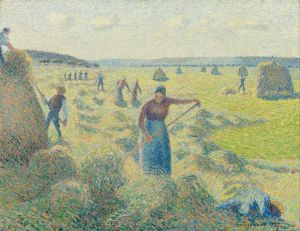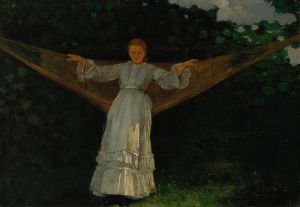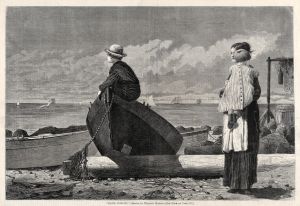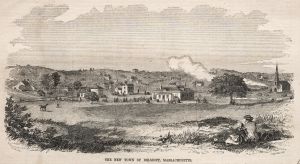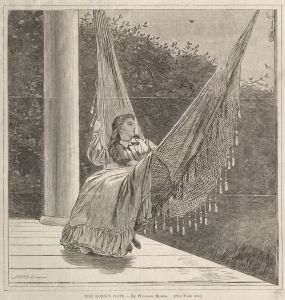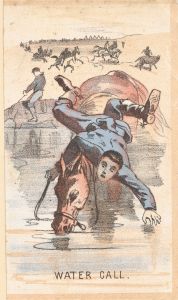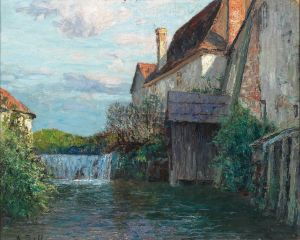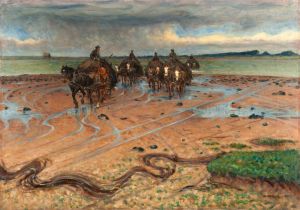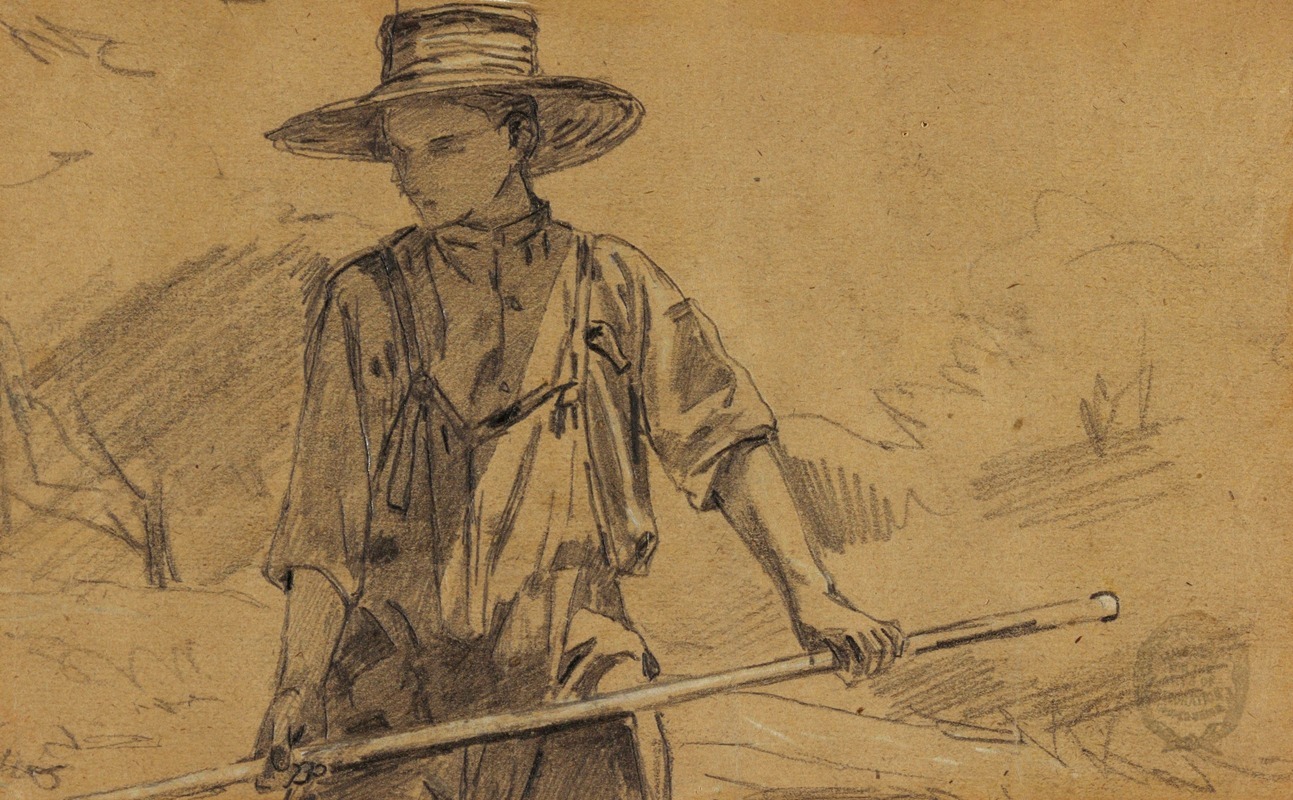
Haymaking
A hand-painted replica of Winslow Homer’s masterpiece Haymaking, meticulously crafted by professional artists to capture the true essence of the original. Each piece is created with museum-quality canvas and rare mineral pigments, carefully painted by experienced artists with delicate brushstrokes and rich, layered colors to perfectly recreate the texture of the original artwork. Unlike machine-printed reproductions, this hand-painted version brings the painting to life, infused with the artist’s emotions and skill in every stroke. Whether for personal collection or home decoration, it instantly elevates the artistic atmosphere of any space.
Winslow Homer, an American painter renowned for his landscape and marine subjects, created the painting "Haymaking" in 1864. This work is a part of his early career, during which he focused on scenes of rural American life, capturing the essence of the 19th-century agrarian lifestyle. "Haymaking" is an exemplary piece that reflects Homer's keen observation and ability to depict everyday activities with a sense of realism and vitality.
The painting portrays a group of figures engaged in the process of haymaking, a crucial agricultural activity during the summer months. Homer’s composition captures the labor-intensive nature of the task, with individuals working together in the field to harvest and stack hay. The scene is set in a lush, green landscape, indicative of the fertile American countryside. The figures are depicted in various poses, each contributing to the collective effort, which underscores the communal aspect of rural life during this period.
Homer's use of color and light in "Haymaking" is notable. The bright, natural light of the summer day is rendered with a palette that includes vibrant greens and earthy tones, which not only highlight the figures and their activity but also convey the warmth and vitality of the season. The artist’s attention to detail is evident in the way he captures the textures of the hay and the clothing of the workers, adding to the realism of the scene.
During the time "Haymaking" was created, Winslow Homer was primarily working as an illustrator for publications such as Harper's Weekly. His illustrations often depicted scenes from the American Civil War and everyday life, which helped him develop a keen eye for detail and narrative. This experience translated into his paintings, where he continued to explore themes of American life and labor.
"Haymaking" is significant not only for its artistic qualities but also for its historical context. It was painted during the Civil War era, a time when America was undergoing significant social and economic changes. The painting reflects a sense of nostalgia for rural life and traditional values, which were perceived as being under threat due to the rapid industrialization and urbanization occurring in the country.
Homer's work, including "Haymaking," is often celebrated for its ability to capture the spirit of American life with authenticity and emotional depth. His paintings from this period laid the groundwork for his later, more famous works, which would continue to explore themes of nature, labor, and the human experience.
Today, "Haymaking" is appreciated as an important example of Winslow Homer's early work, showcasing his development as an artist and his contribution to American art. It remains a testament to his skill in portraying the beauty and complexity of everyday life, and his ability to find significance in the ordinary.






